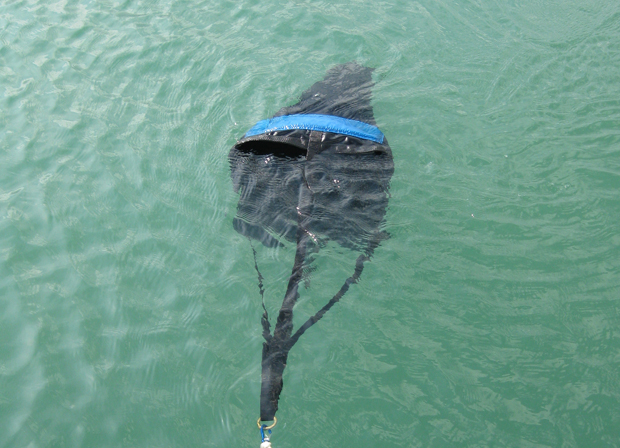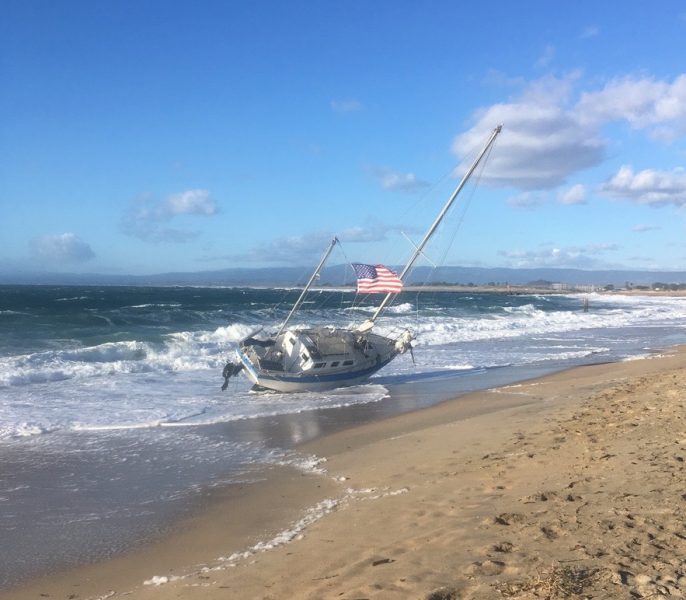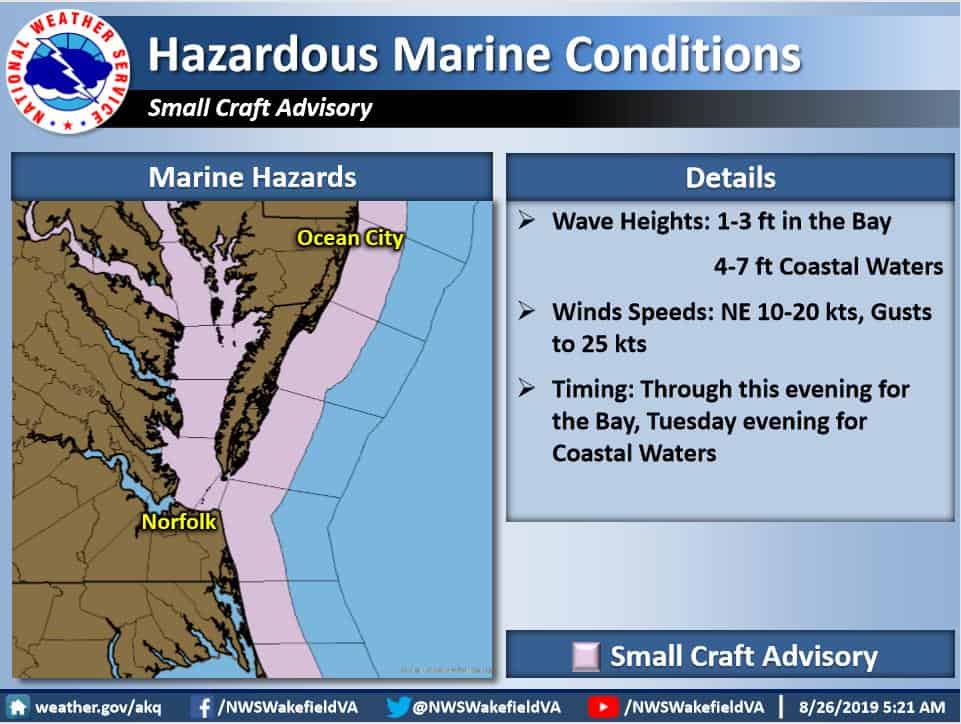A Small Craft Advisory is a warning issued by the National Weather Service for dangerous wind speeds. Small Craft Advisory is a cautionary alert for vessels vulnerable to strong winds.
When such advisories are in effect, it is crucial for small boat operators to exercise caution and consider staying off the water for safety reasons. These advisories aim to prevent accidents and ensure the safety of small craft and their passengers.
Understanding the implications of Small Craft Advisories can help boaters make informed decisions and avoid potential risks associated with adverse weather conditions. By staying informed and heeding these warnings, boaters can prioritize safety and enjoy a more secure and pleasant boating experience.
Small Craft Advisory Decoded
Welcome to the Small Craft Advisory Decoded, where we unravel the mystery behind this important weather warning. When you’re out on the water, staying informed about weather conditions is crucial for your safety. Understanding what a Small Craft Advisory is and how to interpret it can make all the difference in ensuring a smooth and secure boating experience.
Criteria For Issuance
Small Craft Advisories are issued by the National Weather Service to alert mariners about potentially hazardous conditions. These advisories are typically triggered by specific weather criteria that could pose risks to smaller vessels. The main factors that lead to the issuance of a Small Craft Advisory include:
- Rapidly building seas
- Strong winds
- Low visibility
- Any combination of these factors
Interpreting Wind Warnings
Understanding wind warnings is essential for interpreting Small Craft Advisories. When wind speeds reach levels that can endanger smaller vessels, the National Weather Service issues a Small Craft Advisory. It’s important to pay close attention to the forecasted wind speeds and take appropriate precautions to ensure your safety on the water.
Identifying Small Crafts
Small crafts are vessels that may be negatively impacted by adverse weather conditions. Factors such as boat types and sizes, as well as the experience of the vessel operator, play crucial roles in determining whether a craft is considered small.
Boat Types And Sizes
Small crafts encompass a wide range of boat types and sizes, including:
- Fishing boats
- Sailboats
- Pontoon boats
- Kayaks and canoes
- Personal watercraft
Vessel Operator Experience
Operator experience is a key consideration when identifying small crafts. Novice or inexperienced operators may be more susceptible to dangers posed by adverse weather conditions, necessitating caution and adherence to Small Craft Advisories.
Weather Conditions And Risks
A Small Craft Advisory is a type of wind warning issued by the National Weather Service in the United States. It is a warning given to boaters, advising them that conditions may be hazardous for small boats. The advisory is issued when winds have reached dangerous speeds or when sea conditions are rough and pose a threat to the safety of small boats.
Wind Speed And Sea State
Wind speed and sea state are two of the most important factors considered when issuing a Small Craft Advisory. The National Weather Service considers sustained wind speeds of 20-33 knots, and/or seas of 7 feet or greater, to be hazardous to small boats. When these conditions are expected to last for more than two hours, a Small Craft Advisory is issued.
Common Hazards During Advisories
During a Small Craft Advisory, there are several common hazards that boaters should be aware of:
- High winds: These can make it difficult to steer the boat and may cause it to capsize.
- Heavy seas: High waves can swamp a small boat, making it difficult to navigate and posing a risk of capsizing.
- Lightning: Thunderstorms can produce lightning strikes that can be dangerous to boaters.
- Visibility: Fog, rain, or heavy spray can reduce visibility, making it difficult to navigate safely.
It’s important for boaters to take these hazards seriously and to take appropriate precautions, such as staying close to shore or delaying their trip until conditions improve.
Preparation Is Key
Safety Equipment Checklist
Ensuring that the necessary safety equipment is on board is crucial for navigating the waters during a small craft advisory. Here’s a checklist to help you prepare:
- Life jackets for every person on board
- Throwable flotation device
- Sound signaling device (whistle or horn)
- Visual distress signals (flares or signal flags)
- Fire extinguisher
- First aid kit
- Emergency radio communication device
- Navigation lights
Vessel Readiness
Aside from having the right safety equipment, ensuring your vessel is ready to face the potential challenges posed by a small craft advisory is essential. Here are some key readiness measures:
- Inspect the hull and deck for any damages or leaks
- Check the engine and fuel system for proper functioning
- Ensure the bilge pump is operational
- Verify that the navigation and communication systems are working
- Secure loose items and stow gear to prevent shifting
- Review the weather forecast and have a plan for seeking safe harbor if conditions deteriorate
Navigating Rough Waters
When faced with rough waters, it’s essential for boaters to understand the implications of a Small Craft Advisory. Navigating through adverse weather conditions requires skill, caution, and a deep understanding of handling techniques and route planning.
Handling Techniques
When encountering rough waters, it’s crucial to employ proper handling techniques to ensure the safety of the vessel and its occupants. Effective handling involves maintaining control of the boat while minimizing the impact of challenging conditions such as strong winds and high waves. Boaters should be prepared to adjust their approach as per the changing dynamics of the water.
Route Planning
Route planning during adverse weather conditions demands careful consideration of sheltered areas, wind directions, and potential hazards. Boaters should identify safe routes and alternative options to navigate through rough waters, minimizing exposure to dangerous conditions. A well-planned route can significantly enhance the safety of the voyage.

Credit: www.floridasportsman.com
Emergency Protocols
A Small Craft Advisory is a warning issued by the National Weather Service when winds become hazardous. It alerts small boat operators to dangerous wind speeds. This advisory helps ensure the safety of vessels that may be affected by adverse weather conditions.
Emergency ProtocolsWhen a Small Craft Advisory is issued, it is important to know the emergency protocols in case of distress. These protocols can help ensure the safety of everyone onboard and increase the chances of a successful rescue operation.Distress SignalsIn the event of an emergency, it is important to know the proper distress signals to use. These signals can alert other boats and authorities that you are in distress and require assistance. The most common distress signals include firing a flare gun, sounding a horn or whistle, and displaying a distress flag. Make sure to familiarize yourself with these signals before setting out on the water.Communication with AuthoritiesIf you find yourself in distress, it is important to contact the authorities as soon as possible. In the United States, the Coast Guard is the primary agency responsible for search and rescue operations. They can be reached by VHF radio on channel 16, or by dialing 911 on a cell phone. When making a distress call, be sure to provide your location, the nature of the emergency, and the number of people onboard.It is important to note that the authorities may not be able to respond immediately, especially during severe weather conditions. Therefore, it is critical to have a backup plan in case the situation worsens. This may include deploying a life raft, abandoning ship, or taking other necessary measures to ensure the safety of everyone onboard.In conclusion, understanding the emergency protocols associated with a Small Craft Advisory is crucial for any boater. By knowing the proper distress signals and how to communicate with the authorities, you can increase your chances of a successful rescue operation and ensure the safety of everyone onboard.Learning From The Past
Case Studies
Exploring real-life scenarios can provide valuable insights into the impact of Small Craft Advisories.
Lessons Learned
Reflecting on past incidents helps in understanding the importance of heeding Small Craft Advisories.

Credit: www.latitude38.com
Beyond The Advisory
Understanding what a Small Craft Advisory entails is crucial for the safety of boaters and water enthusiasts. However, it’s equally important to go beyond the advisory and implement long-term safety strategies to mitigate risks and ensure a safe and enjoyable experience on the water.
Long-term Safety Strategies
While being aware of Small Craft Advisories is essential, adopting long-term safety strategies can significantly enhance water safety. Consider the following approaches:
- Investing in a reliable marine weather radio to stay informed about changing weather conditions.
- Participating in boating safety courses to enhance your knowledge and skills in handling adverse weather conditions.
- Regularly checking and maintaining your vessel to ensure it is in optimal condition for safe navigation.
- Developing a comprehensive emergency preparedness plan, including communication protocols and safety equipment.
Further Resources And Training
Accessing additional resources and training can empower boaters to navigate through adverse conditions with confidence and competence. Here are some valuable resources and training options:
- Enrolling in advanced boating courses that focus on weather awareness and navigation in challenging conditions.
- Utilizing online platforms and apps that provide real-time weather updates and forecasts specific to your boating location.
- Engaging with local boating communities and organizations to exchange knowledge and experiences related to safe boating practices.

Credit: www.chesapeakebaymagazine.com
Frequently Asked Questions
What Are Considered Small Crafts?
Small crafts are vessels that could be negatively affected by Small Craft Advisory criteria, considering the operator’s experience, vessel type, size, and seaworthiness. There’s no specific size definition.
What Triggers A Small Craft Advisory?
A Small Craft Advisory is triggered when winds reach dangerous speeds, posing risks to small vessels.
What Size Boat Is Considered A Small Craft For A Small Craft Advisory?
A specific size for a small craft in a Small Craft Advisory is not defined. Consider vessel type, operator experience, and sea-worthiness.
What Is Classified As A Small Craft?
A small craft is any vessel that may be adversely affected by Small Craft Advisory criteria. It includes consideration of the vessel operator’s experience, type, overall size, and sea worthiness of the vessel. The National Weather Service does not specifically define a small craft by size.
Conclusion
A Small Craft Advisory is a crucial warning issued by the National Weather Service when wind speeds become hazardous for small vessels. It’s imperative for boaters to heed these warnings and prioritize safety. Understanding and respecting Small Craft Advisories can help prevent dangerous situations at sea.


